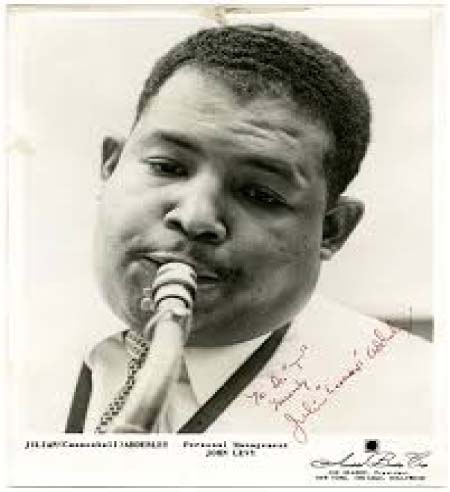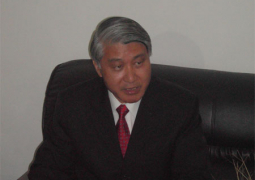
It
is said that the piano is the fundamental instrument of jazz; however, it is
also evident that as jazz music evolved the significance of other musical
instruments became noticeable and the musicians who played those instruments
became very influential, thus highlighting the popularity of those instruments
while reshaping the music. One such instrument is the saxophone. It is played
by some of the leading figures in jazz and those who play the instrument are
called saxophonists.
The
saxophone is a transposing musical instrument that is a member of the woodwind
family. It was invented in 1846 by a Belgian instrument maker-Adolph Sax, who
was also a clarinetist and a flutist. It became very popular in military bands,
but would later be associated with Popular music, Big Band music, Blues, early
Rock and Roll and particularly jazz. Jazz saxophonists play various types of
the instrument,-the Tenor, Alto and Soprano each with its own distinct sound
and technique. The technique and instrumentation of the saxophone evolved in
the 20th century and was influenced by the movements of musicians who became
sub-genres and had among them some very influential and powerful saxophone
players who would go on to reshape the music.
In
the 1930’s, during the swing and big band era, saxophonists like Johnny Hodges
who played with the Duke Ellington band were featured in a soloist role with a
highly structured system of playing where such moments were rare and there was
limited periods of musical freedom. In the 1940’s, saxophonists such as Charlie
Parker led a rebellion against the structures of big band, shifting jazz away
from danceable popular music towards a more challenging ‘musicians’ music that
would be called Bebop with solos that were more distinct and free. As the use
of the saxophone became more popular, John Coltrane and others broke new ground
in jazz, infusing their music with Rhythm and Blues styles and gospel
influences as part of the hard bop sub-genre.
In
the 1950’s and 60’s, free jazz pioneers such as Ornette Coleman developed
unusual new sounds and playing styles, and in the 70’s a blending of rock and
jazz appeared with saxophonist Wayne Shorter at the forefront of that movement.
In the 80’s another new brand of jazz again emerged and was called smooth jazz.
It was a more radio friendly style of fusion, and was led by Kenny G and David
Sandburn. Another saxophonist who was around at the same time but did not
receive much attention as his counterparts is Cannonball Adderly.
His
birth name is Julian Edwin Adderly. He was born in Tampa, Florida on September
15th 1928.
He
was a jazz alto saxophonist who played during the hard bop era, but was also
known for the blending of blues and R&B into his playing style. He was an
educator and a musician, but was long established as a school teacher before
becoming known for playing the saxophone. He taught music classes at Dilliard
High School in Fort Lauderdale, Florida, before moving to Tallahassee with his
parents who were lecturers at Florida A&M University. While leaving in
Tallahassee, Adderly met Ray Charles and together with his brother Nat Adderly,
they played with Ray Charles and became a local sensation until he moved to New
York City in 1955. It was in New York where Adderly’s prolific career began. It
all happened by chance, as he visited the Café Bohemia one evening carrying his
saxophone, and when the saxophone player for the band that evening was late,
Cannonball was asked to sit in. He soared through the changes and impressed the
band leader-Oscar Pettiford who gave him a chance to play in the weeks that followed.
In
1957, he formed his own band with his own brother Nat who is a cornet player
and signed with the Savoy jazz label. He was noticed by Miles Davis for his
blues rooted saxophone playing style and was invited to join Miles’s sextet. He
stayed with Miles for a short period and was part of the band that recorded
Miles’s records-“Milestones” and ‘Kind of Blue’. While playing with Miles, he
met pianist Bill Evans and developed a strong association with him, which led
to their collaboration to record two albums-‘Portrait of Cannonball’ and ‘Know
what I mean’. He never strayed from his interest as an educator and in 1961 he
narrated and released ‘The Child’s Introduction to Jazz’ on Riverside records.
He was still playing with Miles while trying to work with his Quintet with his
brother Nat. However, this was a difficult task and it was only after leaving
Mile’s group that he was able to maintain a steady band, a sextet with such
noted musicians as pianists Bobby Timmons, Joe Zawinul, George Duke and Bill Evans;
bassists Ray Brown, Sam Jones, Walter Broker and Victor Gaskin; drummers Louis
Hayes and Roy McCurdy and also with saxophonist Charles Lloyd and Yusef Lateef.
This sextet was very popular in the 60’s and was able to achieve crossover
success with pop audiences without making any significant artistic concessions.
By
the end of the 1960’s, Adderly’s playing style began to reflect the influences
of the electric jazz Avant Garde that had touched him while working with Miles
Davis.
In
1968, he released the album ‘Accent of Africa’ and in 1970 another album
entitled ‘The Price You Got to Pay to Be Free’. In both albums he began
doubling on the soprano saxophone displaying the influence of John Coltrane and
Wayne Shorter. In the same year, he appeared at the Monterey Jazz Festival in
California. In 1975 he appeared in an acting role in the T.V. series Kung Fu
and performed the song ‘The Battle Hymn’. Songs made famous by Adderly and his
band include ‘This Here’ written by Bobby Timmons, ‘The Jive Samba’ a work song
written by Nat Adderly, ‘Mercy, Mercy, Mercy’ and ‘Walk Tall’ by Joe Zawinul.
His
musical career was short lived and in 1975 he died of a stroke in Gary,
Indiana. He was buried in his hometown of Tallahassee, Florida and later that
year, he was inducted into the Down Beat Jazz Hall of Fame.
This
article is dedicated to the late Ali Harb (Alberr) of the I Fang Bondi Band. He
was a great musician, a wonderful saxophonist with a sweet voice.



